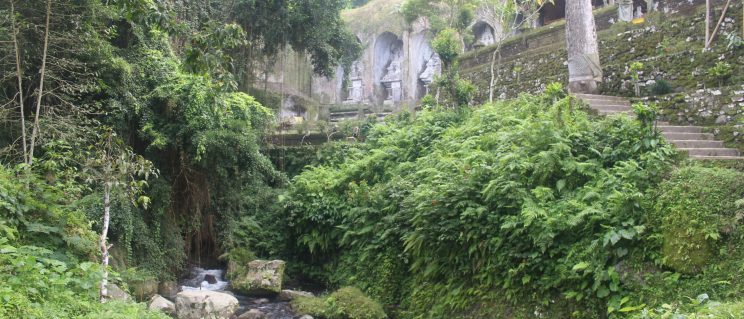Indonesia, Bali, Tampaksiring village, 11th century, Andesite
Set within a lush ravine outside Tampaksiring village, Gunung Kawi’s sacred area includes both rock-cut and structural shrines at various elevations on either side of a rushing river.
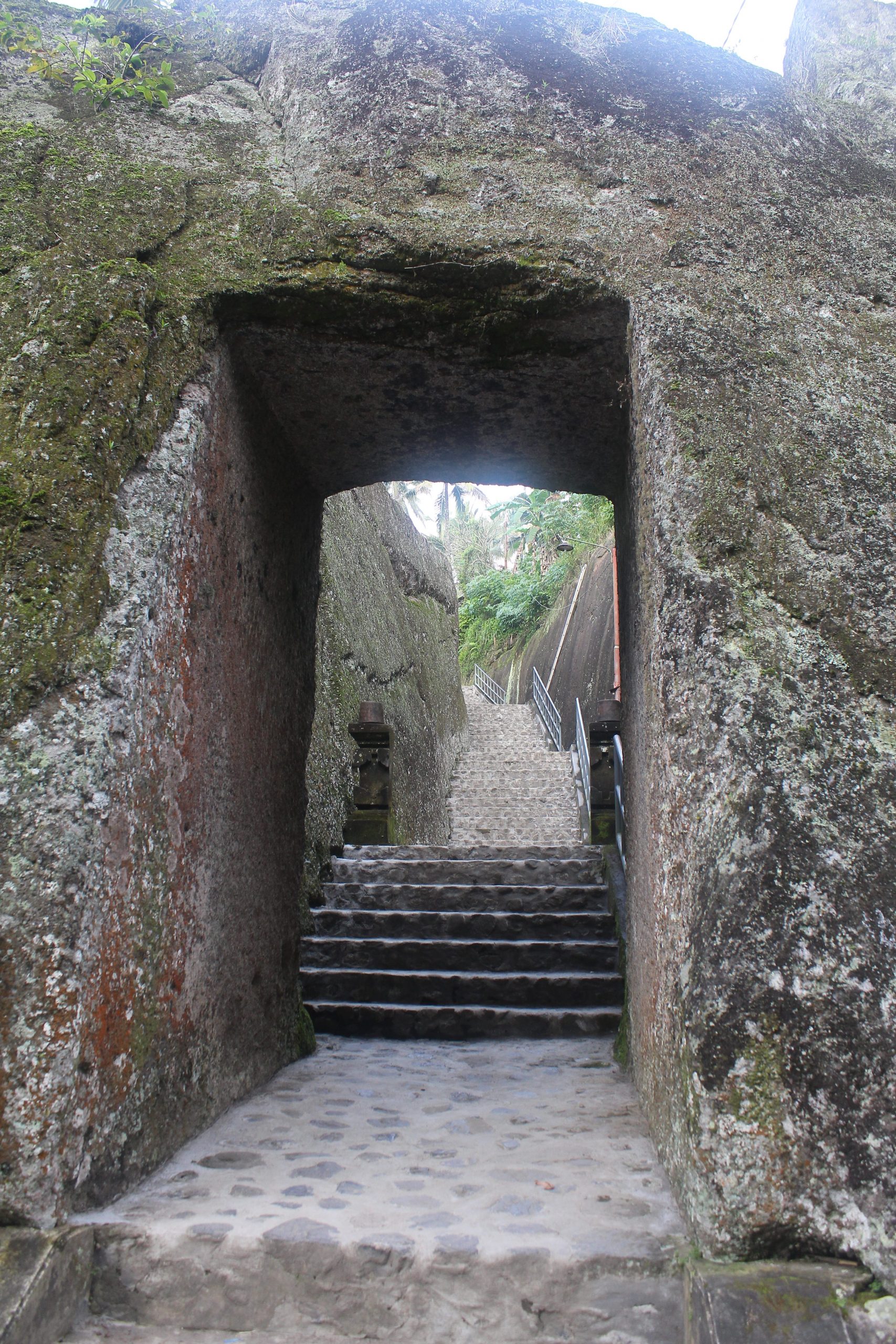
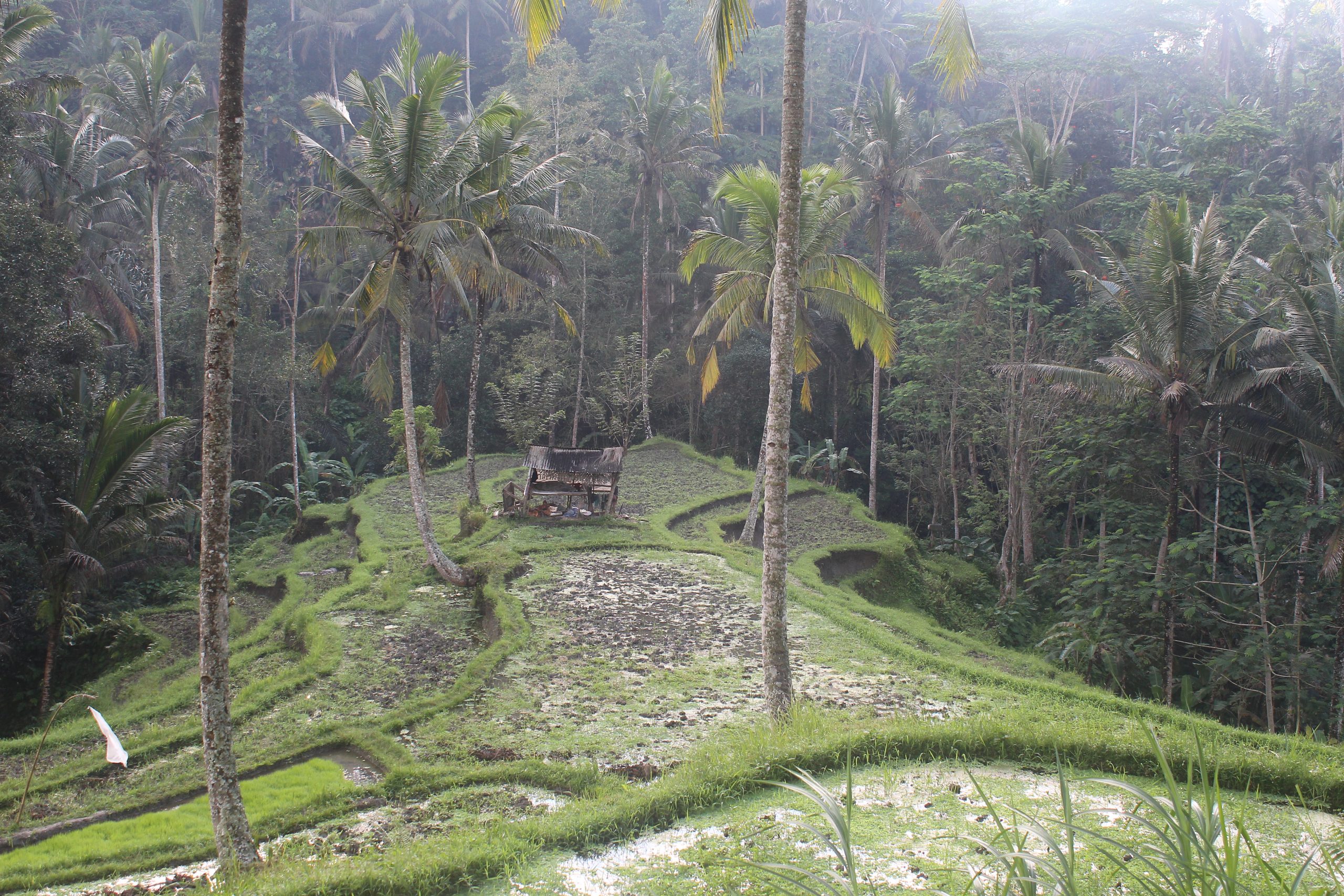
Pathways and flights of stairs wend through the landscape, descending toward the river and mounting the rocky slopes. They lead to caves scooped from the cliffside, and then present panoramic views of terraced rice fields giving way to the surrounding jungle.
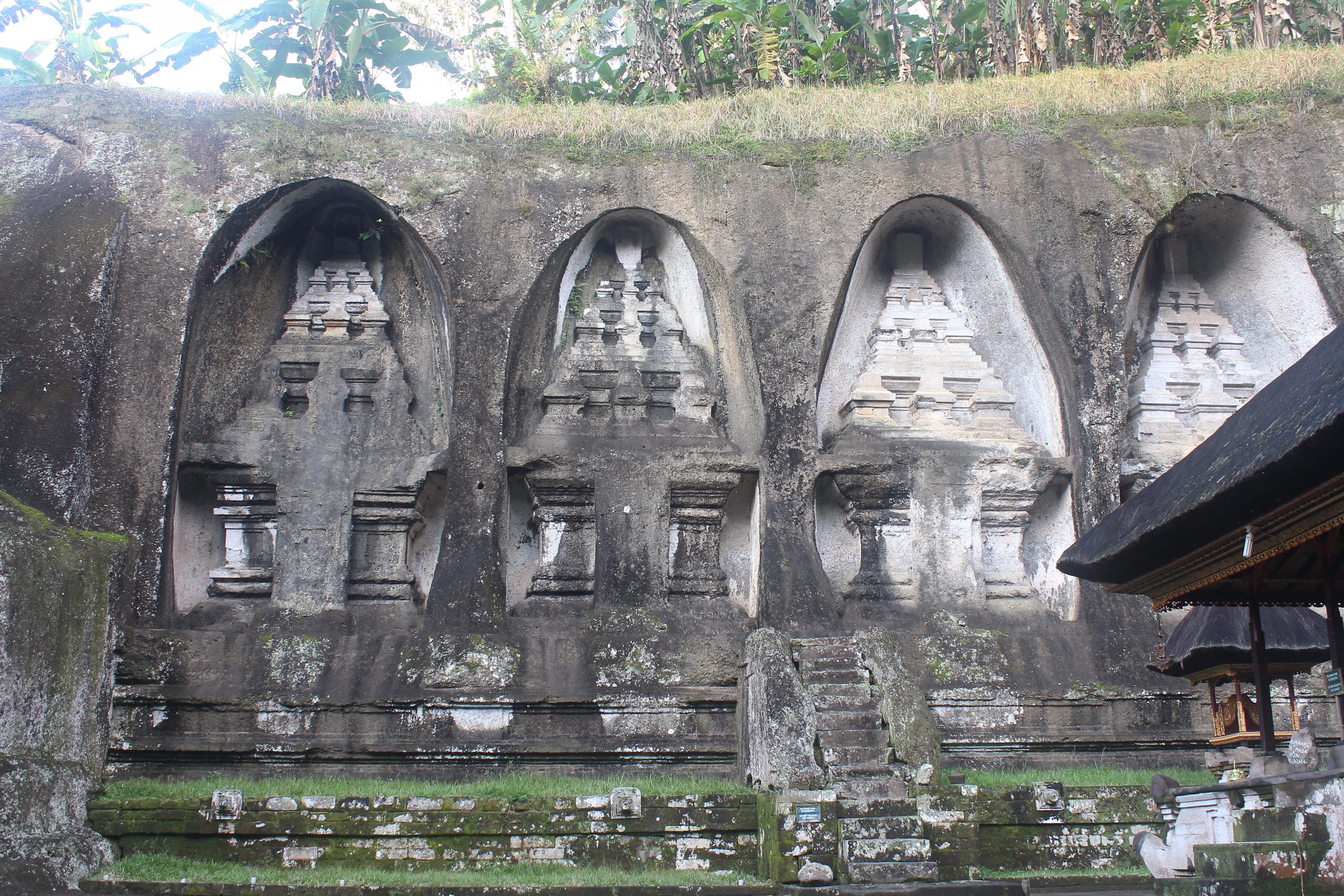
Rock-cut architecture dominates the site. The east side of the ravine displays a set of five monumental shrines (candis) that spans the surface of a smoothed cliff. The paddy fields and jungle hover just above. Referred to as “royal tombs,” these candis were carved in honor of deceased eleventh-century rulers. A stone box with partitions containing sacred materials once sat at each shrine’s base. These offerings represented the ruler’s departed spirit and connected it with the universe.

Higher up on the eastern slope, a shrine hewn from the living rock stands freely in the middle of a cloister. The technique of carving recalls the rock-cut temples of south India, such as the Kailasanatha at Ellora (western Deccan) and the monolithic shrines at Mamallapuram (Tamil Nadu), which were carved four hundred years earlier.
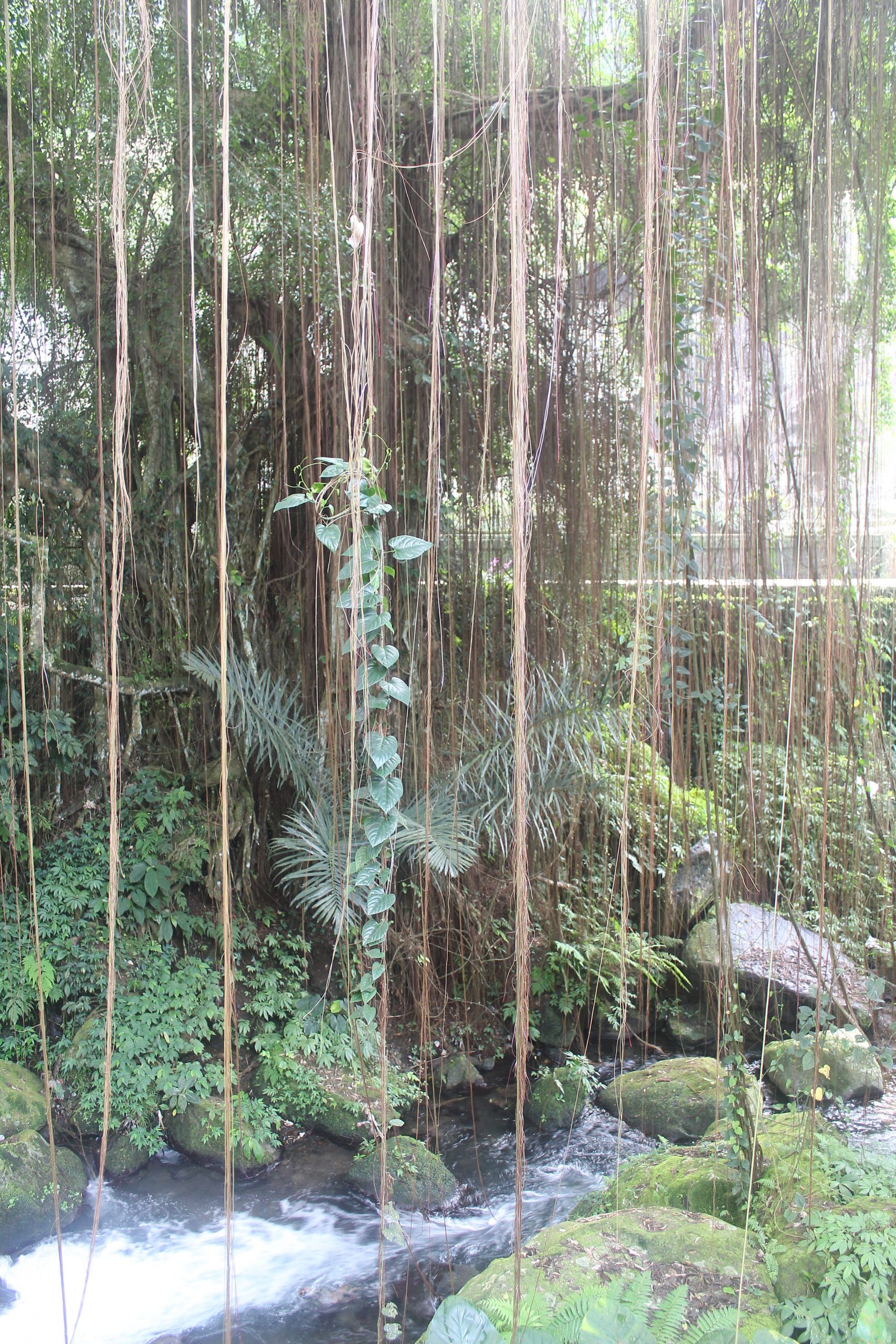
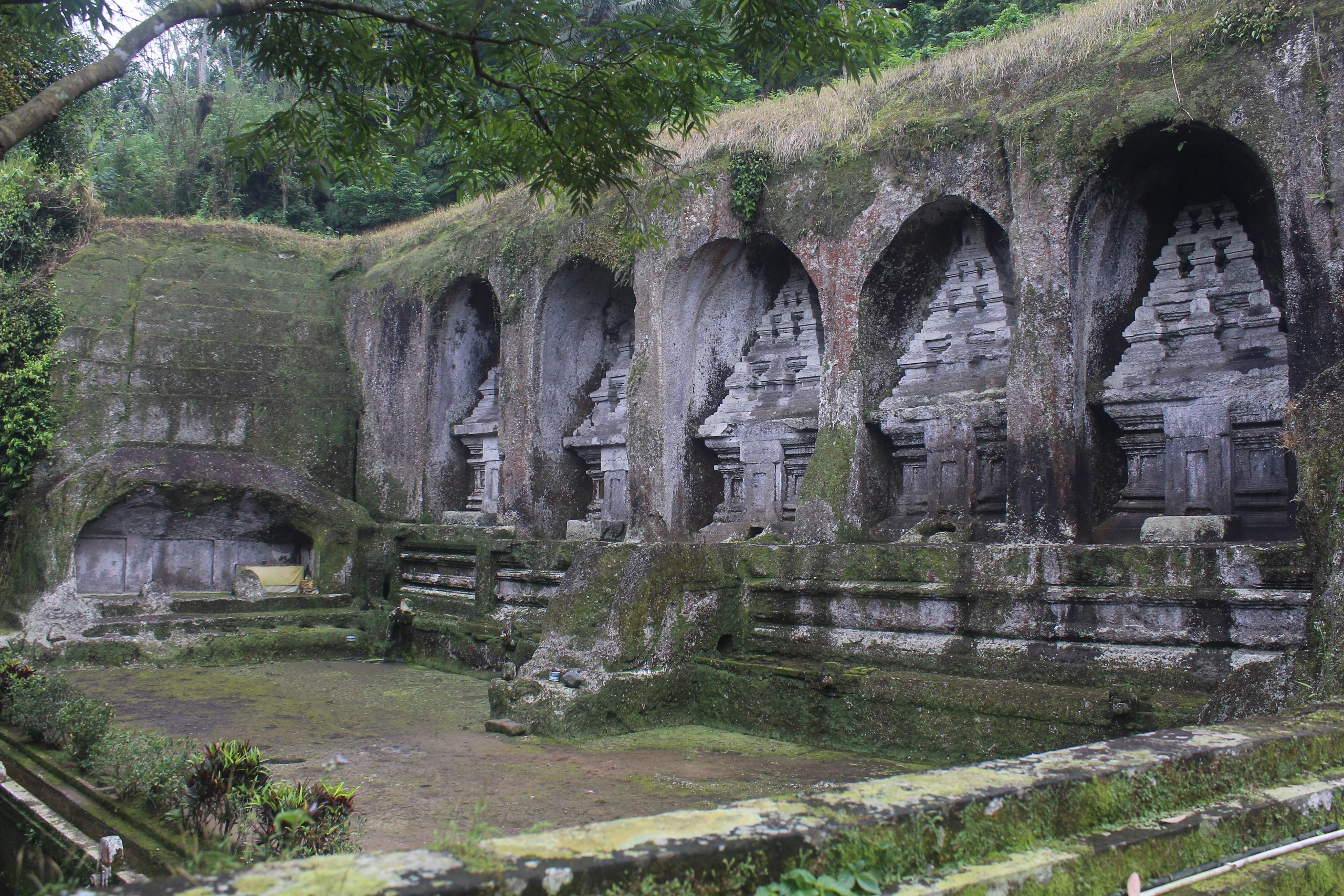
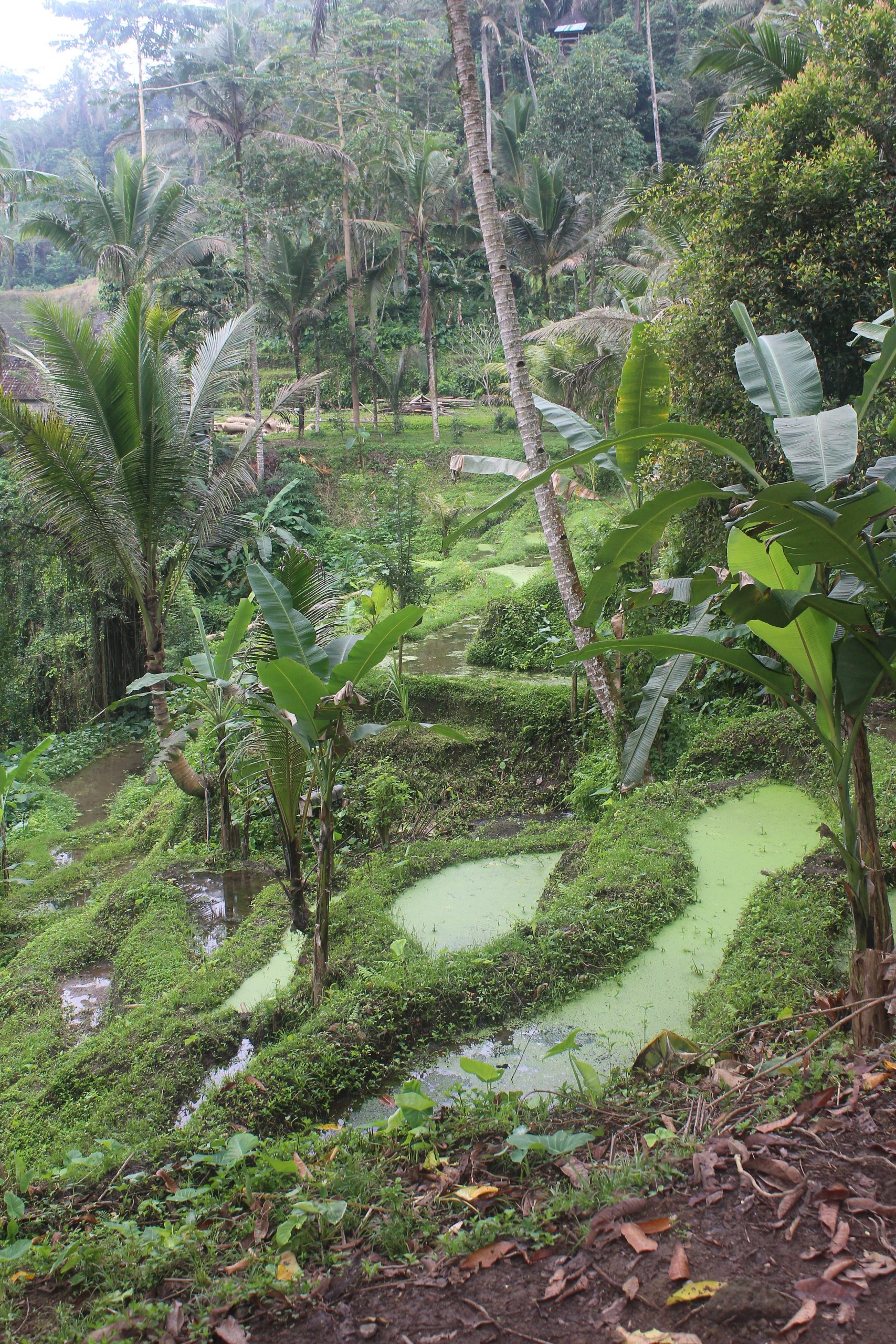
Gunung Kawi’s designers made brilliant use of gravity’s natural pull. Water runs throughout the site, irrigating the sacred structures just as it does the surrounding fields. A stream diverted from the river once filled a large pool in front of the wall of five candis.
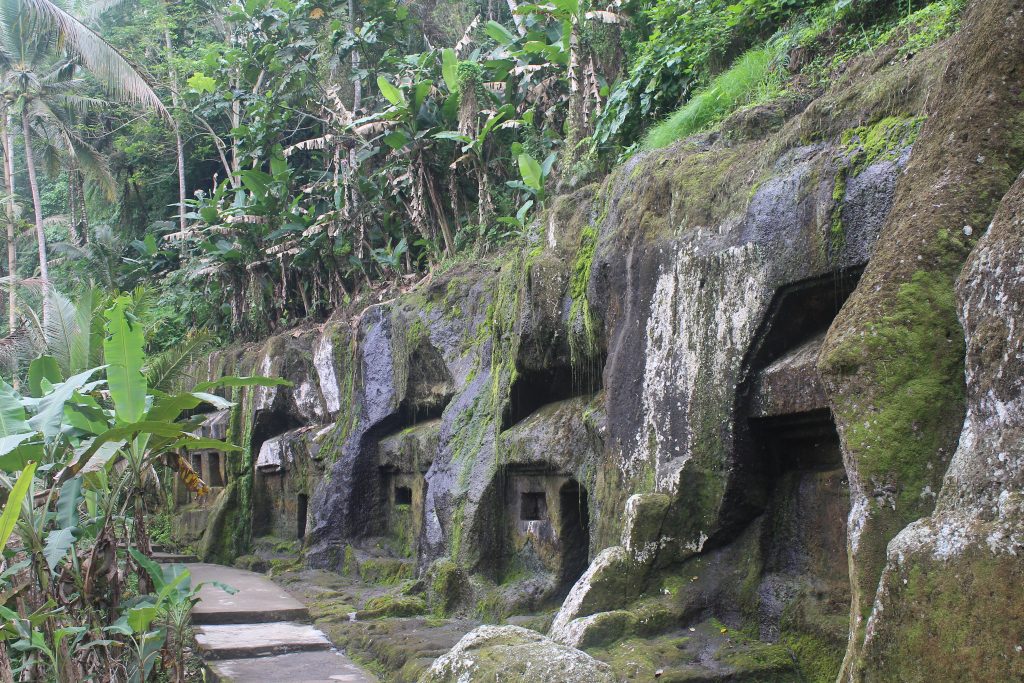

Water flows from the top of the ravine, coalescing into thunderous waterfalls or dripping steadily down the fronts of caves. Near a set of caves on the site’s southwest extremity, a more recent freestanding shrine features finials in the shape of nagas, those mythical guardians of the watery netherworld.
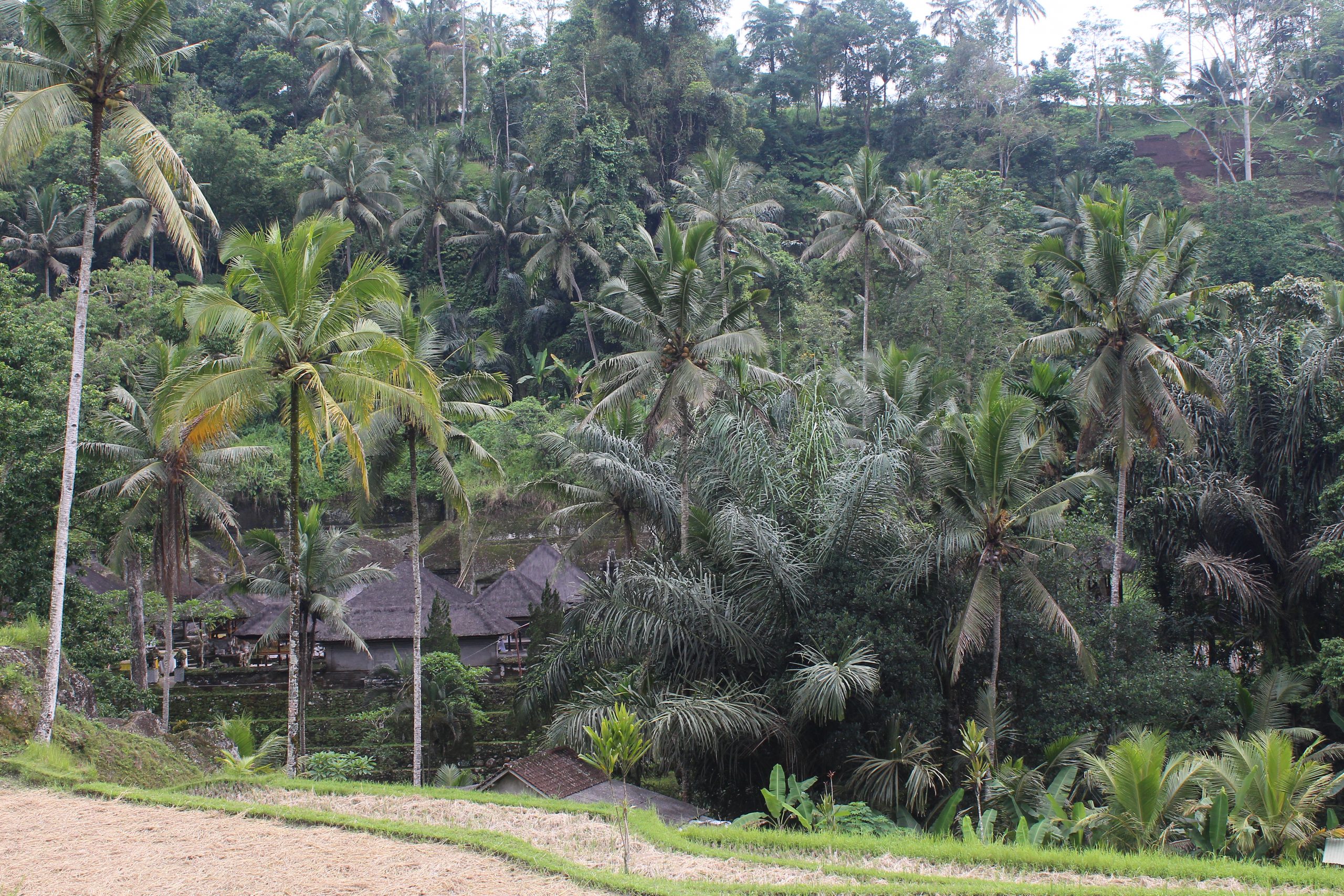
Although Gunung Kawi contains no bodily relics—the deceased rulers would have been burned and their ashes scattered—it is a site deeply connected with landscapes both terrestrial and beyond.


